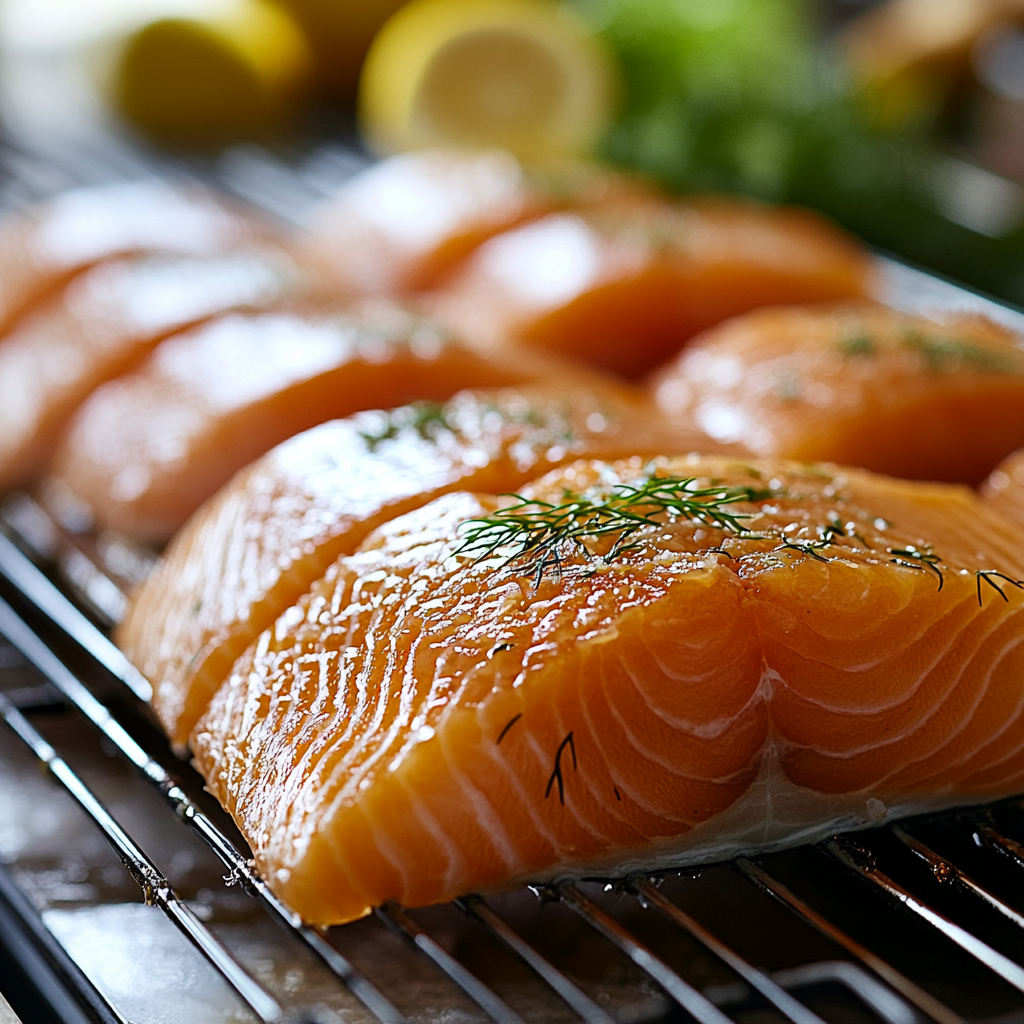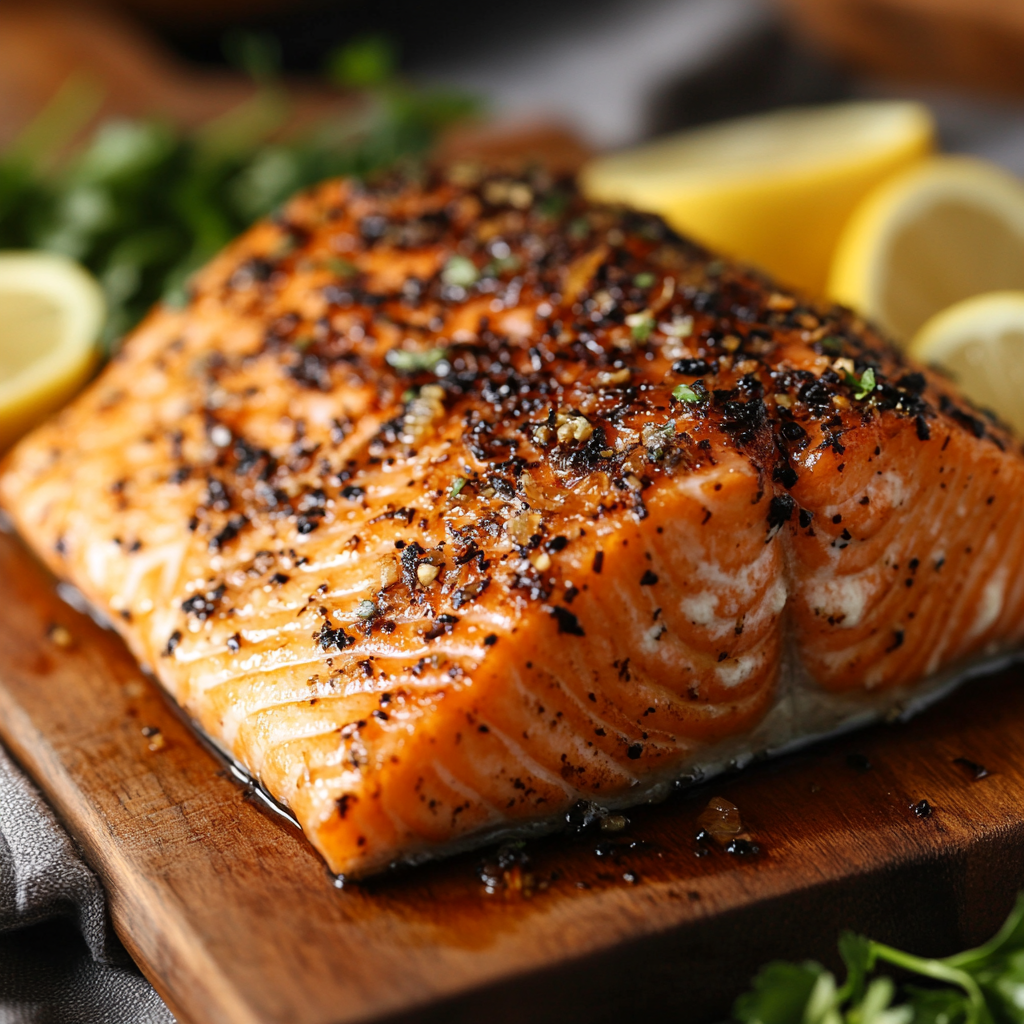Introduction
Smoking salmon is a popular culinary technique that has been used for centuries, loved for the rich flavors it imparts to the fish. Whether you’re a professional chef or a home cook, smoking salmon can elevate a dish and add a gourmet touch. However, many people wonder, do you have to brine salmon before smoking? The short answer is that while it isn’t strictly required, brining can significantly improve the outcome.
This article will take a deep dive into the benefits of brining, how it affects the smoking process, and offer step-by-step instructions to ensure you get the best results whether you choose to brine or not. We’ll also explore different brining methods and alternative approaches if you prefer to skip brining altogether.
For more information on smoked salmon recipes, check out our Smoked Salmon Recipe Guide.
What is Brining and Why Do You Have to Brine Salmon Before Smoking?
Brining is the process of soaking food in a saltwater solution before cooking. It is a common technique used with meats, poultry, and fish. The primary reason you brine salmon before smoking is to add flavor and ensure that it retains moisture throughout the smoking process. Since smoking is a slow cooking method, fish can easily dry out if not prepared properly. Brining helps mitigate this issue.
The Science Behind Brining
The magic of brining lies in the process of osmosis. When salmon is immersed in a salt solution, the salt breaks down some of the muscle proteins in the fish, allowing water and seasonings to penetrate the flesh. This not only increases the moisture content but also enhances the flavor of the fish.
Additionally, salt helps firm up the flesh of the fish. This is especially important when smoking, as salmon can become too flaky and delicate. The brining process ensures the fish retains its texture and structure, making it easier to slice and serve after smoking.
For more details on keeping your salmon moist during smoking, you can visit How to Keep Salmon Moist When Smoking.
Why Brining Matters When Smoking Salmon
Smoking is a slow process that typically takes several hours. During this time, the salmon is exposed to low heat and smoke, which can dry it out. This is where brining comes in: by soaking the fish in a salt solution, you help it retain more moisture, resulting in a tender, juicy piece of smoked salmon.
The Benefits of Brining Salmon Before Smoking
- Enhanced Flavor: Brining allows the salt to penetrate deep into the flesh of the salmon, seasoning it from the inside out. You can also add herbs, spices, and other flavorings to the brine to further enhance the taste.
- Improved Texture: Brining helps firm up the texture of the fish, making it more robust and less likely to fall apart during the smoking process.
- Moisture Retention: Perhaps the most important benefit, brining helps the salmon retain moisture throughout the smoking process. This ensures the fish remains juicy and flavorful, rather than dry and overcooked.
Flavor Customization Through Brining
One of the greatest advantages of brining is that you can customize the flavor profile. Depending on your personal preference, you can add ingredients like garlic, bay leaves, dill, or citrus to the brine to create subtle nuances in the final dish.
For more information on how to add flavor and retain moisture, visit How to Keep Salmon Moist When Smoking, which offers practical tips for achieving the best results.
Wet Brining vs. Dry Brining: Which is Better for Smoking?
When it comes to brining salmon for smoking, there are two primary methods: wet brining and dry brining. Both methods have their merits, and the choice between them depends on the flavor and texture you want to achieve.
Wet Brining: Should You Brine Salmon Before Smoking?
Wet brining involves submerging the salmon in a solution of salt, sugar, and water. This method is traditional and commonly used because it consistently produces flavorful, moist salmon. The water in the brine helps the fish absorb moisture, while the salt ensures the salmon stays juicy during smoking.

Ingredients for Wet Brine:
- 1 gallon of water
- 1 cup of kosher salt
- 1/2 cup of brown sugar
- Optional flavorings: crushed garlic, black pepper, dill, lemon zest, or bay leaves
Process:
- In a large container, dissolve the salt and sugar in water. Stir well to ensure everything is fully dissolved.
- Add any additional seasonings you prefer.
- Submerge the salmon fillets in the brine, ensuring they are fully covered.
- Refrigerate for 4 to 6 hours, or up to 12 hours for a stronger flavor.
Dry Brining: An Alternative to Brine Salmon Before Smoking
Dry brining doesn’t use water. Instead, a mixture of salt and sugar is rubbed directly onto the salmon. This method results in a more intense flavor because the salt and sugar are concentrated on the surface of the fish, and it also gives the salmon a firmer texture.
Ingredients for Dry Brine:
- 1 cup of kosher salt
- 1/2 cup of brown sugar
- Optional spices: ground black pepper, paprika, dill, or garlic powder
Process:
- Mix the salt, sugar, and any other spices in a bowl.
- Rub the mixture generously onto both sides of the salmon fillets.
- Place the salmon on a wire rack in the refrigerator for 6 to 12 hours, uncovered or lightly covered with plastic wrap.
For more detailed recipe ideas, take a look at the King Salmon Recipe, which explores various methods for preparing salmon, including brining and smoking.
Step-by-Step: How to Brine Salmon Before Smoking
Once you’ve decided on the type of brine to use, it’s time to follow a step-by-step process to prepare your salmon for smoking.
Step 1: Prepare the Brine
Wet Brine:
- In a large container, combine 1 gallon of water with 1 cup of kosher salt and 1/2 cup of brown sugar. Stir until everything is dissolved.
- Add any flavor enhancers like crushed garlic, lemon slices, or fresh dill.
Dry Brine:
- Mix 1 cup of kosher salt and 1/2 cup of brown sugar, along with any spices or herbs you prefer.
- Rub the mixture evenly over the salmon, covering all sides.
Step 2: Brine the Salmon
Wet Brine:
- Submerge the salmon fillets in the brine. Ensure the fish is fully covered by the solution.
- Let the salmon soak in the refrigerator for 4 to 6 hours. For a milder flavor, brine for 4 hours. For a stronger flavor, brine for 12 hours, but don’t exceed that time as the fish could become too salty.
Dry Brine:
- Place the coated salmon on a wire rack and refrigerate for 6 to 12 hours. Make sure the fillets are spread out to allow for proper curing.
After brining, rinse the salmon under cold running water to remove excess salt and sugar. Pat the fillets dry with paper towels to prepare for the next step.
Step 3: Let the Salmon Dry
Once brined and rinsed, it’s important to let the salmon air dry to form the pellicle. This step is essential for proper smoking, as the pellicle helps the smoke adhere to the fish.

- Place the salmon on a wire rack, skin-side down.
- Allow it to air dry for 1 to 2 hours in the refrigerator or at room temperature. You’ll notice a slightly tacky texture forming on the surface.
For more on the drying process, check out the Smoked Salmon Recipe Guide for tips on achieving the perfect pellicle.
Step 4: Smoke the Salmon
Now that your salmon is brined and ready, it’s time to smoke it.
- Preheat your smoker to 175°F to 200°F. Use wood chips like alder, applewood, or hickory for a mild, yet rich flavor.
- Place the salmon in the smoker, skin-side down, on the smoker racks. Make sure there is enough space between each fillet to allow for even airflow and proper smoking.
- Smoke the salmon for 2 to 3 hours, or until the internal temperature reaches 145°F. Keep the temperature steady to avoid overcooking, and monitor the smoker to ensure the wood chips are producing a steady stream of smoke.
For more information on smoking times and temperatures, visit How Long to Smoke Salmon.
Do You Really Have to Brine Salmon Before Smoking?
While brining is highly recommended, it’s not mandatory. If you’re pressed for time or prefer the natural taste of salmon, you can skip the brining step. However, there are some trade-offs.
Benefits of Skipping Brining
- Faster Prep: Skipping the brine saves several hours of preparation time.
- Natural Flavor: Without brining, the salmon retains its pure, unaltered taste. This can be appealing if you prefer the natural flavor of fish without added salt or spices.
- Lower Sodium: Brining adds a significant amount of salt to the salmon, so skipping this step can reduce sodium content.
Drawbacks of Skipping Brining
- Dryer Texture: Since smoking naturally dries out the fish, skipping the brine can result in a drier final product.
- Less Flavor: Without the salt and other flavorings from the brine, the smoked salmon might lack the depth of flavor that brining provides.
For a quick, non-brined recipe, check out this Salmon Bites Recipe for a simple and tasty alternative.
Conclusion: Do You Have to Brine Salmon Before Smoking?
So, do you have to brine salmon before smoking? The answer depends on your goals. Brining adds flavor, moisture, and firmness to the fish, making it ideal for achieving a superior smoked salmon. However, if you’re pressed for time or prefer the natural taste of salmon, skipping the brine is a viable option. Either way, with proper smoking techniques, you can create a delicious and flavorful smoked salmon that will impress.

Ultimately, both brined and non-brined smoked salmon have their place in the kitchen. The key is to experiment with different methods and find what works best for your palate and cooking style. Whether you’re preparing a feast for a dinner party or making a simple snack, smoked salmon is sure to impress.

